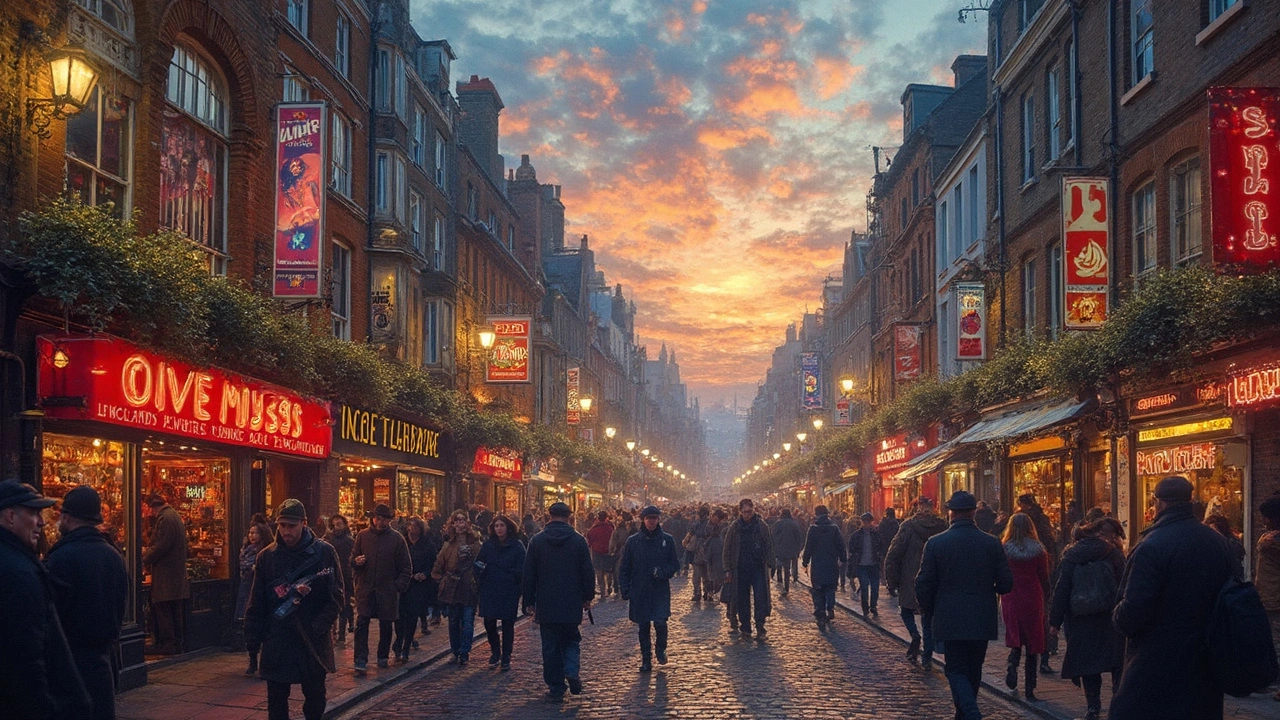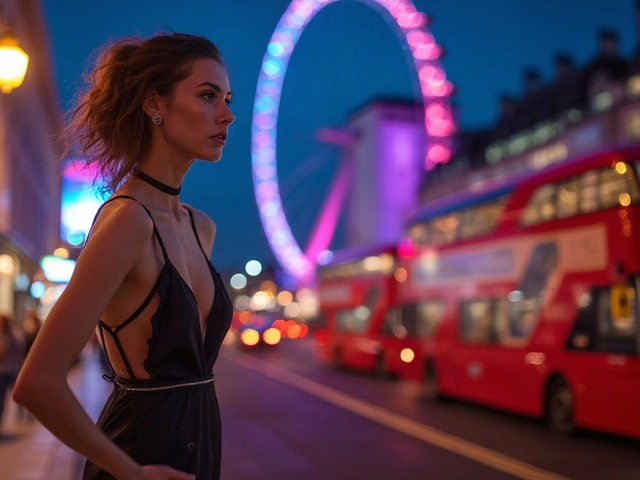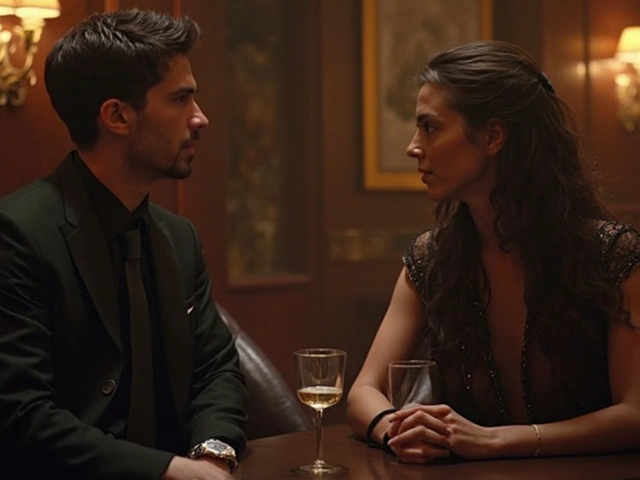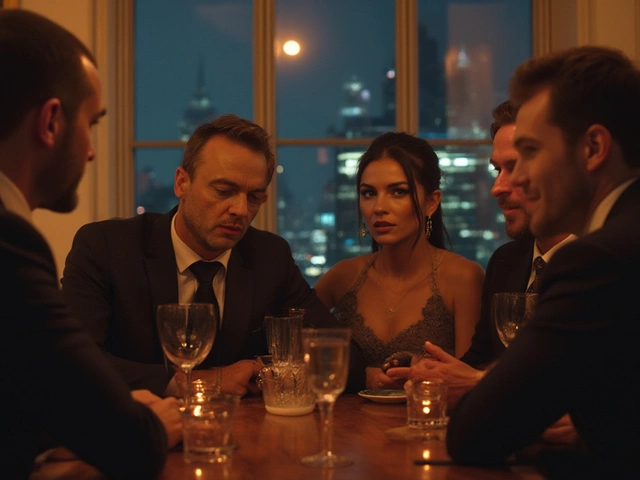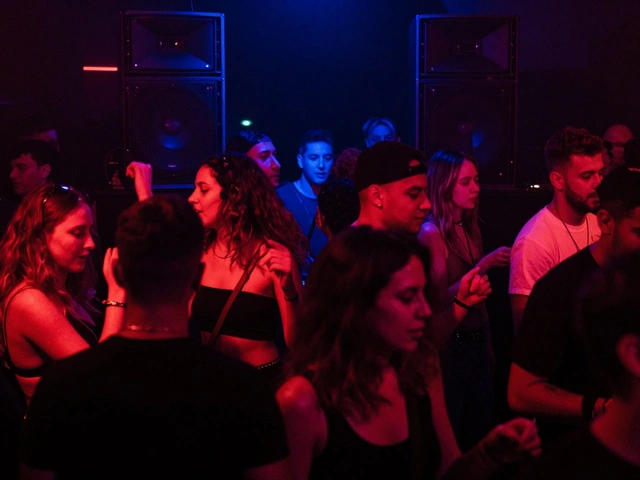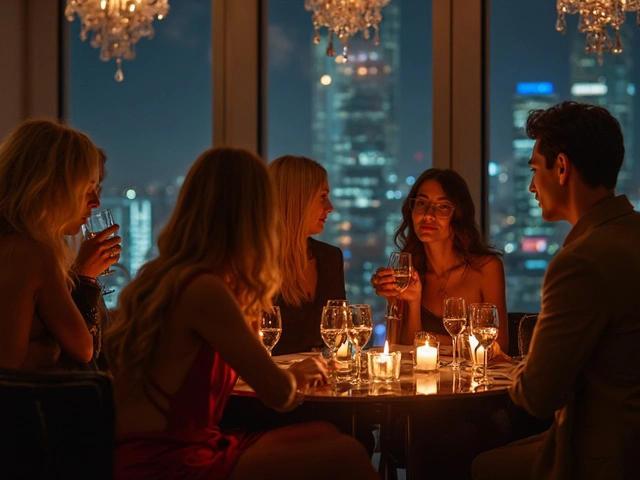Ask any music lover to name a city packed with legendary live venues, and London has to be at the top of the list. Whether you’ve grown up queuing outside the Roundhouse or only just discovered a Camden dive bar, the history of London’s live music spots can change the way you see each gig.
Back in the day, music wasn’t just something you streamed. It was loud, local, sweaty, and everywhere—hidden above pubs in Soho, crammed into tiny basements in Dalston, or spilling out from street corners in Hackney. If you love catching bands before they become big, London’s independent venues are gold mines for that sort of thrill. Today, you might swipe for tickets on Dice or Skiddle, but decades ago, it was word of mouth and well-practised queueing in the drizzle that scored you a ticket to the next breakout act.
For anyone new to the city’s nightlife, it pays to know your venues. These aren’t just buildings—they’re places where entire music movements took off, where legends like Amy Winehouse played to rooms barely bigger than your living room. But the scene keeps changing. That’s why it’s crucial to keep your ear to the ground, sign up to venue newsletters, and ask locals for the best under-the-radar gigs. Next time you wander down Denmark Street or the back alleys of Shoreditch, think about the generations before you who did the same, chasing the next great sound.
- The Roots: Early London Music Hangouts
- The Golden Age of Pubs and Clubs
- Landmarks and Legendary Venues
- From Analog to Digital: Shifts in Sound and Setup
- Surviving the Shifts: Licensing, Gentrification, and Community
- Tips and Trends for Today’s London Gig-Goer
The Roots: Early London Music Hangouts
London’s live music scene didn’t just pop up overnight. The city’s gig culture actually goes back centuries, with music rooted deep in its streets and tradition. Back in the 1700s and 1800s, places like Vauxhall Gardens and Ranelagh Gardens were the places to be for live performances, drawing crowds with everything from classical orchestras to rowdy folk acts. You’d see working-class folks mixing with fancy types, all after the same thing: great music and a strong drink.
But the real start for many of today’s venues came in the 20th century when jazz and blues crept in through London’s docklands and Soho started buzzing with music. The 100 Club on Oxford Street kicked off in 1942, famous as a jazz basement before punk rockers crashed the party decades later. Ronnie Scott opened his famous jazz club in Soho in 1959, giving the city a place where legends like Ella Fitzgerald and Miles Davis could play to packed rooms. These names are still going strong, which says a lot about their place in the city’s heart.
When talking about London live music, it’s hard not to mention how a lot of early gigs happened above or below local pubs. The Dublin Castle in Camden started as a pub for Irish workers in the mid-19th century but turned into a key venue for bands like Madness in the ‘70s and ‘80s. The Hope & Anchor in Islington was punk’s home long before punk was cool, launching acts that’d headline stadiums years later.
Fancy a few facts? Here’s a quick look at some key spots and their impact:
| Venue | Opened | Notable Acts | Fun Fact |
|---|---|---|---|
| 100 Club | 1942 | Sex Pistols, Oasis | Hosted the first international punk festival in 1976 |
| Ronnie Scott’s | 1959 | Jimi Hendrix, Nina Simone | Hendrix played his last UK gig here in 1970 |
| The Dublin Castle | 1856 | Madness, Amy Winehouse | Still run by the same family after 50+ years |
| Hope & Anchor | 1880s | The Police, Dire Straits | Hangout of punk and pub-rock legends |
If you want to tap into this side of London, start your own venue tour early in the evening. Lots of these original pubs keep their best live acts for weekdays, and the crowds are usually a bit thinner then. Also, check their websites—many places still post hand-written gig lists that don’t make it to ticketing sites. Scouting these places is a right of passage for anyone who wants to say they’ve really experienced the core of London’s music story.
The Golden Age of Pubs and Clubs
For a lot of Londoners, real memories were made in gritty pubs and clubs long before big arenas became the norm. From the 1960s through the 1990s, these places ruled the London live music scene—and not just in the West End. Neighborhood venues popped up all across the city, booking acts you can spot on historic album covers today.
Back then, famous spots like The Marquee Club in Soho hosted The Rolling Stones’ early gigs, while The 100 Club on Oxford Street set the stage for punk, jazz, and anything experimental. Even Paul McCartney played low-key gigs at the Hope & Anchor in Islington. Locals still talk about shows at The Dublin Castle in Camden, a place that launched acts like Madness. Pubs weren’t just for beer—they were incubators for future headliners.
Here’s a quick look at what made those days so special:
- Pub landlords were often the unsung heroes, booking fresh talent and taking chances on unknown bands.
- No flashy logos or ticketing apps—just handwritten posters, cheap entry, and word of mouth.
- Music licensing was much looser. Bands could play original material without red tape.
Venues packed in crowds, with some spots holding barely 100 people, turning any gig into an up-close experience. Ticket prices were nothing like what you see now, and bands mingled with punters after the show.
| Venue | Era | Notable Acts | Typical Ticket Price (£, historic) |
|---|---|---|---|
| The Marquee Club | 1964–1988 at Wardour Street | The Who, David Bowie, Led Zeppelin | 1–3 |
| The 100 Club | 1942–today | Sex Pistols, Oasis, Amy Winehouse | 2–5 |
| Hope & Anchor | 1970s–today | The Stranglers, Madness | 1–4 |
| The Dublin Castle | 1970s–today | Morrissey, Blur | 3–6 |
For anyone itching for a taste of the "golden age," some of these venues are still around. Check their websites or local gig listings—they often run anniversary shows or retro nights. And don’t forget: local pubs still book live music, so stop in for a pint and a chance to catch the next big thing before the rest of London hears about them.
Landmarks and Legendary Venues
If you care about London live music, you know the city isn’t just home to random gig spots. London’s music venues have made history, hosted icons, and fueled new music scenes. These aren’t just buildings—they shaped the city’s culture and nightlife.
The Marquee Club, once tucked on Wardour Street, kicked off The Rolling Stones and rock’s British invasion. Sadly, it closed, but its story lives on in every pub band playing Friday night. The 100 Club on Oxford Street, open since 1942, still packs in crowds for jazz, punk, and indie gigs—this place saw the Sex Pistols and Oasis before they hit big. Speaking of icons, Ronnie Scott’s in Soho has been the spot for jazz since 1959. Rare is the Londoner who hasn’t dreamed of making the late-night guest list here at least once.
You can’t miss the Roundhouse in Camden—an old train shed turned arts powerhouse that’s hosted David Bowie, Pink Floyd, and even Jay-Z. Alexandra Palace (“Ally Pally” if you’re local) is where you go for festival-size gigs without trekking out of London. More than 10,000 people can cram inside for acts like Arctic Monkeys or Queens of the Stone Age. Then there’s Brixton Academy—officially O2 Academy Brixton—one of the UK’s busiest and wildest venues. With its sloped floor, you’re never too far from the action.
Here’s a quick look at some headline numbers and facts from a few of these spots:
| Venue | Year Opened | Famous Acts | Capacity |
|---|---|---|---|
| 100 Club | 1942 | Sex Pistols, Oasis, The Clash | 350 |
| Ronnie Scott’s | 1959 | Miles Davis, Ella Fitzgerald, Prince | 250 |
| Roundhouse | 1847 (music since 1966) | David Bowie, Jimi Hendrix, Radiohead | 3,300 |
| Brixton Academy | 1929 (music since 1983) | The Prodigy, Madonna, The xx | 5,000 |
| Alexandra Palace | 1873 | Blur, Florence + The Machine, Arctic Monkeys | 10,250 |
If you want to catch a show, check their websites for upcoming events—some venues drop tickets months ahead, and hot gigs sell out fast. Want a more intimate experience? Try smaller spots like The Lexington in Islington or the Windmill in Brixton, where indie bands often test new tunes before anyone else hears them.
A tip: Certain gigs still run old-school—physical tickets, strict door times, cash preferred at the bar. Always check the venue’s rules before you head out. In London, being a regular can mean knowing which places let you see the band without standing in an endless queue, or snagging tickets at the last second if you follow the right social media account.
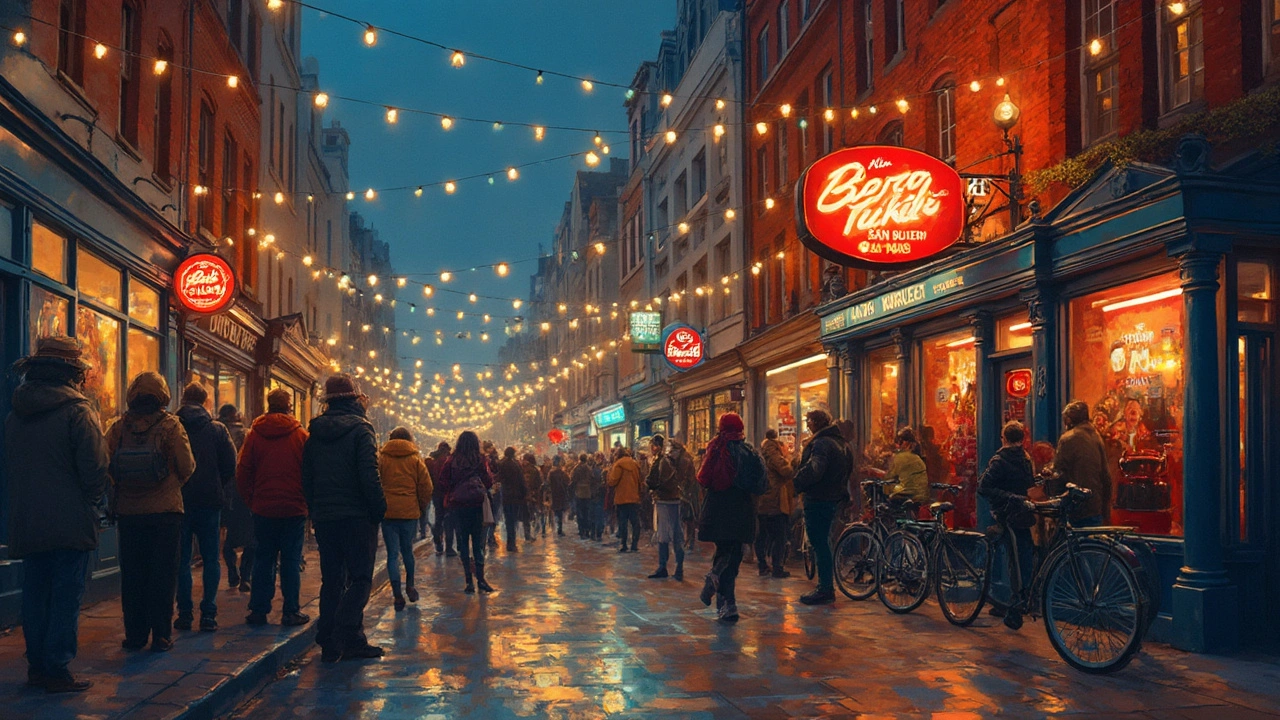
From Analog to Digital: Shifts in Sound and Setup
If you walked into a typical London gig in the ‘70s or ‘80s, the sound set-up was all wires, heavy amps, rattling mixing desks, and the risk of feedback spoiling the best sets. Musicians and sound techs had to be half engineers, keeping temperamental gear humming during a sweaty night at the Hope & Anchor or the 100 Club. Vinyl was king, tapes were the backup, and it took ages to get everything working.
Now, head to a show at KOKO or Electric Brixton and the difference is obvious. Digital soundboards and computer-controlled lighting have changed the game. Engineers make tweaks from an iPad. Bands can use backing tracks or even stream soundchecks to fans online. The crowd expects high-quality sound, not just volume. If you’re planning a night out for London live music, odds are the crisp audio is digital from mic to main speakers.
Let’s look at some real-world numbers that show how things have shifted:
| Era | Average Venue Sound Setup | Estimated Setup Time | Ticket Distribution |
|---|---|---|---|
| 1970s-1980s | Analog mixing desks, stacks of amps, reel-to-reel tape | 3-5 hours | Physical box office, phone lines |
| 2020s | Digital soundboards, wireless mics, pre-set lighting scenes | 1-2 hours | Online booking, QR e-tickets, app notification drops |
It’s not just the sound. Digital tech means venues track bar tabs with apps, check entry with barcode scans, and blast last-minute ticket deals across social media. The O2 Arena swapped out paper tickets years ago; even tiny venues like the Windmill in Brixton often use e-tickets or WhatsApp groups for secret gigs. This stuff makes it easier to get in and out, and keeps lines shorter at the bar and cloakroom.
If you’ve got a band, London’s gear rental spots (like FX Rentals near Farringdon) rent out digital systems by the night. Want to livestream your set for mates abroad? Loads of venues now offer plug-in points and built-in cameras—just ask the sound tech when you arrive. These upgrades help even small venues stay competitive when everyone’s fighting for audience attention and event budgets.
The switch to digital isn’t without its pains. Some old-school fans complain digital loses the warmth analog brought to gigs. But if you want consistent sound, speedy changeovers, and maybe a cheeky Instagram story right from the barrier, London venues are leading the way.
Surviving the Shifts: Licensing, Gentrification, and Community
London’s music venues have faced some serious roadblocks, especially in the last 20 years. Tight licensing laws, sky-high rent, and the march of gentrification have closed far too many beloved spots. You might remember places like the Astoria—gone to make space for the Crossrail. Even the big names aren’t immune: The 12 Bar Club, Madame Jojo’s, and The Good Ship all shut their doors, victims of rising costs or local complaints.
One of the major headaches for venue owners is licensing. Since the 2003 Licensing Act, councils can hit venues with rules covering everything from opening hours to sound limits. In some boroughs, even tiny clubs need a detailed sound management plan. And when new luxury flats pop up next door, it’s just a matter of time before noise complaints follow. For example, Fabric in Farringdon almost vanished in 2016 before a massive local campaign and changes to its license helped keep it open.
Add in the cost of doing business in central London—crazy rent increases and new landlords mean live music has to fight for every square foot. A 2023 report by the Music Venue Trust showed that 125 grassroots venues shut across the UK that year alone. It’s not just a London problem, but the capital always feels the squeeze hardest.
| Year | Grassroots Venues Closed (UK) | Average Central London Rent Increase (%) |
|---|---|---|
| 2017 | 38 | 8 |
| 2020 | 83 | 11 |
| 2023 | 125 | 13 |
The good news? London’s music fans and locals refuse to give up. Campaign groups like the Music Venue Trust and Save Soho are fighting back. Community support means everything—think crowdfunders, petitions, and locals actually using their local venues, not just talking about saving them. It’s not just nostalgia: these venues help bands survive, keep the vibe of whole neighbourhoods, and make London’s nightlife unique around the world.
- Want to help? Buy tickets directly from venue sites, not just big agencies.
- Join venue mailing lists for updates—loads of places like the Lexington dish out last-minute bargains.
- If you hear about a closure threat, back the campaigns—even sharing on social media helps.
- Support new spots when they open: places like MOTH Club or EartH in Dalston are proof that the scene can bounce back with the right crowd behind it.
If you’re passionate about London live music, staying active and showing up might be the difference between another closure and the survival of your favourite gig spot.
Tips and Trends for Today’s London Gig-Goer
If you’re chasing the best London live music experience, it pays to be on the ball. Venues sell out fast, lineups change at a moment’s notice, and finding your way to a secret warehouse gig in Hackney Wick is almost a rite of passage. Let’s break down what you need to know to get the most out of the city’s ever-evolving music scene.
- Book Ahead: Popular spots like O2 Academy Brixton, KOKO, and Electric Ballroom are known for selling out in minutes, especially if it’s a hyped artist or band. The smaller places, like MOTH Club and The Lexington, often use apps like Dice, which means you can skip paper tickets but you need to act quick.
- Travel Smart: Night Tube is a game-changer, but it doesn’t run on all lines or all nights. Taxis and Ubers surge after midnight, especially if a big event just ended. Check apps like Citymapper for real-time routes and make sure your phone’s charged for late-night journeys.
- Support Independent Venues: Gentrification and rising rents have put pressure on smaller venues. Consider checking out spots like The Windmill in Brixton or The Shacklewell Arms in Dalston. These venues often host future stars—Fontaines D.C. played The Windmill before headlining large festivals.
- Mind The Age Limits and Curfews: Many iconic pubs and clubs still have 18+ policies, and some shows, especially all-ages events, finish by 10:30pm due to local licensing. Always check individual venue rules before heading out.
- Look Out for Livestreams and Hybrid Events: Since 2020, some venues like Union Chapel and Ronnie Scott’s have started offering livestream tickets, letting you catch gigs even if you can’t be there in person.
- Saving Money: Drinks prices can sting in Central, and cloakrooms are rarely free. Some venues let you bring in water bottles (check first), and plenty of Londoners pre-drink in nearby pubs to save cash. You’ll also find happy hours in places like Oslo Hackney and Camden Assembly if you know when to go.
| Expense | Cost (GBP) |
|---|---|
| Small venue ticket | £12 |
| Mainstream act (arena) | £59 |
| Pint of beer | £6.50 |
| Cloakroom | £2-£5 |
| Night Tube | £2.70 (single) |
Want a tip that most locals swear by? Sign up for venue mailing lists, follow your favourite spots on Instagram, and keep an eye out for special "secret" gigs—which happen more than you’d think. If you’re going solo, don’t worry—plenty of London gig-goers turn up alone and make friends at the bar or right in the crowd. And remember: earplugs are smart, cloakrooms are usually packed, and portable chargers save the day.
The scene shifts quickly, but if you’re willing to explore, you’ll always find a place in London’s music crowds—whether it’s a pub gig in Kilburn, an open mic night in Shoreditch, or the sweaty mosh pit at The Underworld in Camden. Stay flexible and tune in; there’s always something around the corner just waiting to be heard.

